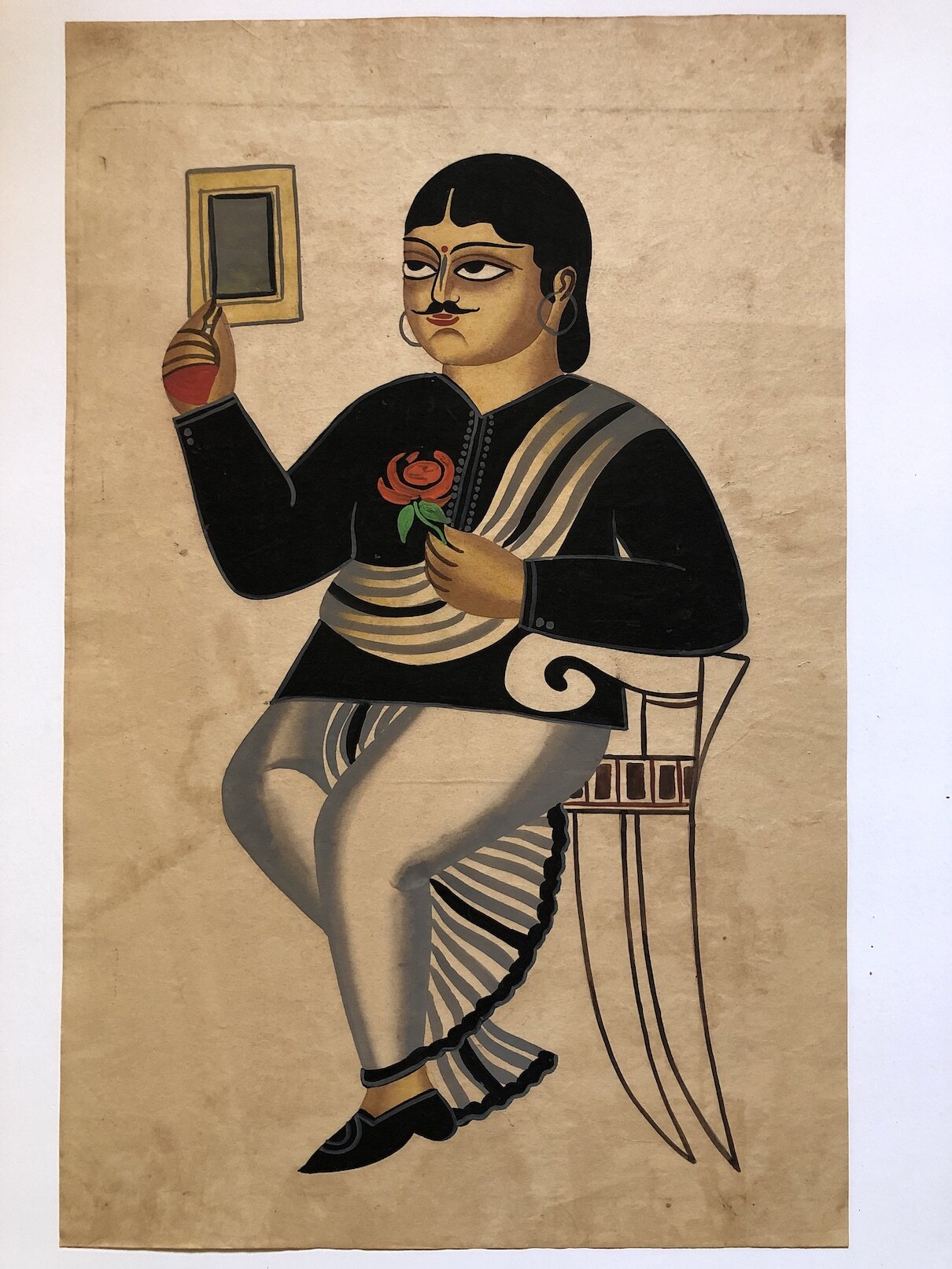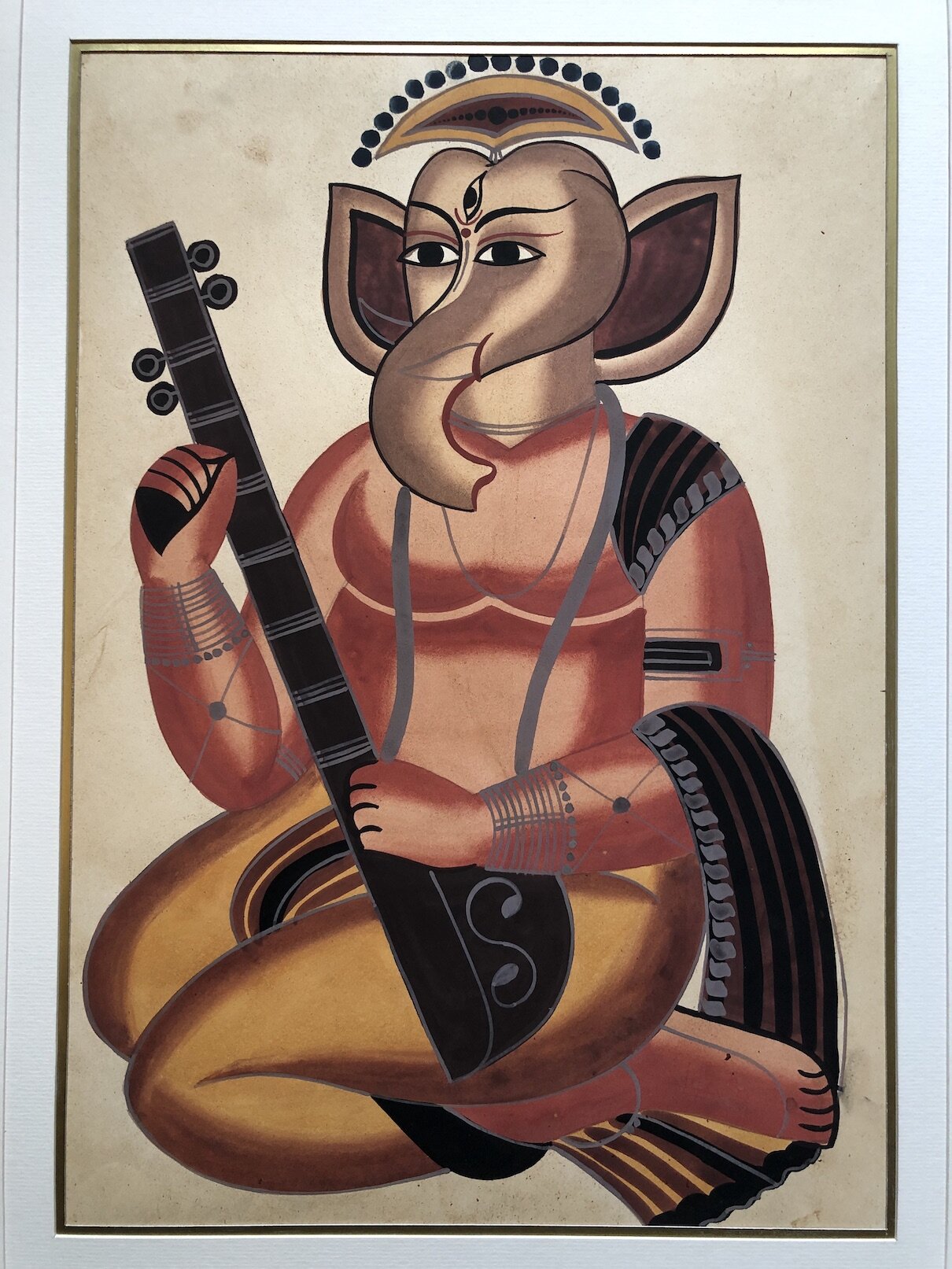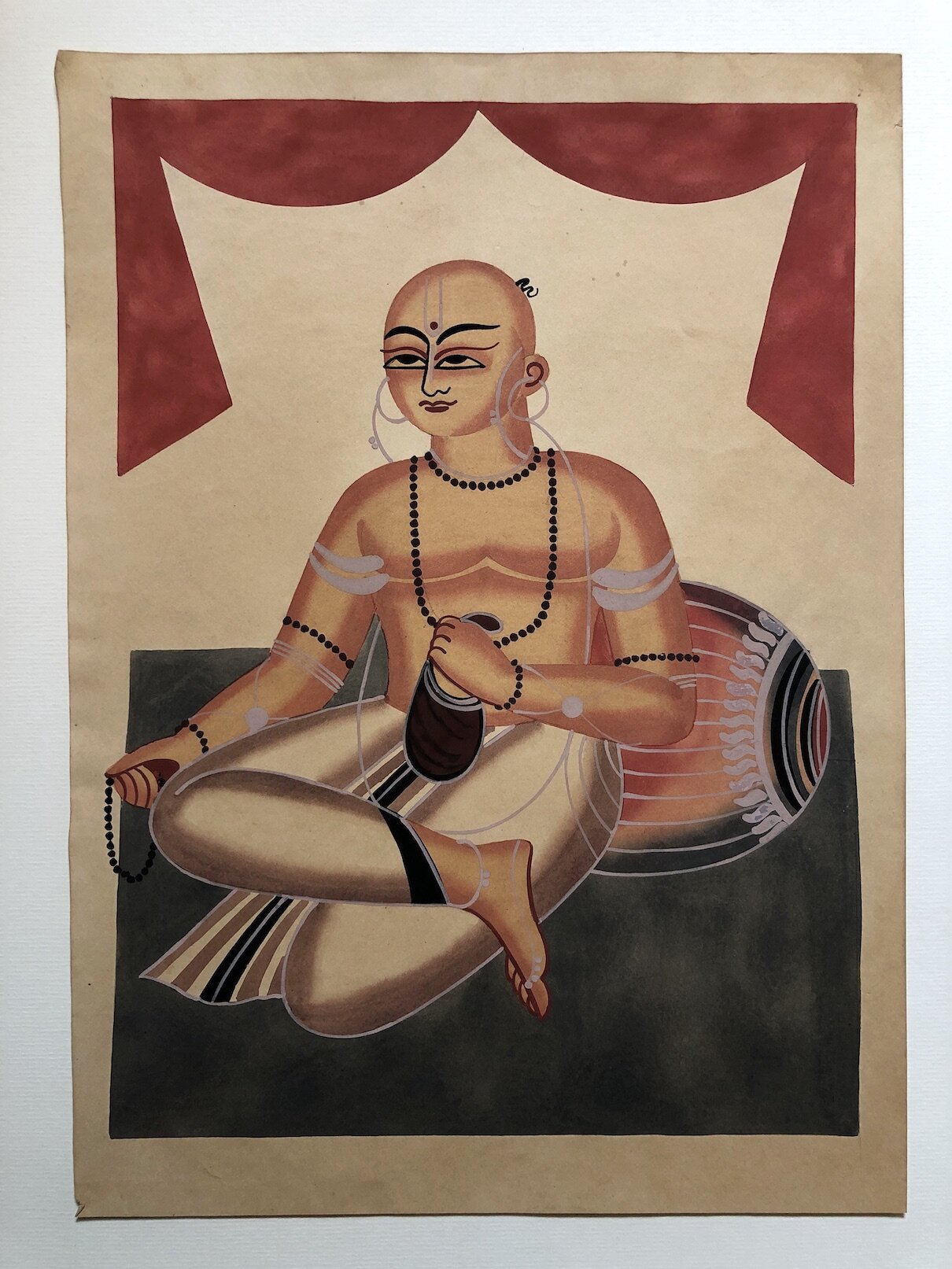Kalighat Paintings
Art365 India
For prices and other information, please call or email.
Kalighat painting originated in 19th century West Bengal, India, in the vicinity of the Kalighat Kali Temple in Calcutta. From initially being items of souvenir taken by visitors to the Kali temple, the paintings over a period of time developed as a distinct school of Indian painting, characterised by bright colours and bold outlines. What started out as a depiction of Hindu gods and other mythological characters, later developed to reflect a variety of themes.
The patuas or painters traditionally painted long narrative stories, often over 20 feet in length. Influenced by the different art forms around them and with a need to work quickly, the patuas abandoned their linear, narrative style in favour of single pictures involving one or two figures. The backgrounds were left plain, all non-essential details removed, and basic combinations of colours were used. This created the key characteristics of the Kalighat genre. The patuas' productivity was also helped by the import of cheaper readymade paints from Britain and mill-made paper.
The paintings attracted the interest of many foreign travellers who visited the city in the 19th century. As examples of 'oriental' or 'exotic' souvenirs, Kalighat paintings were perfect – easily portable and concise enough to explain to friends back home.
Kalighat painting continues today in the rural districts of West Bengal. Medinipur and Birbhum are two such areas where the practice of Kalighat painting has been kept alive by contemporary artists. Using organic dyes, as the original 19th century patuas did, the paintings they create focus on secular themes and current events as well as a mixture of religions depictions, executed in a modern style. Today, Kalighat paintings appear in museums and galleries across the globe, from the Victoria Memorial Hall in Kolkata to the Naprstek Museum in Prague.













































